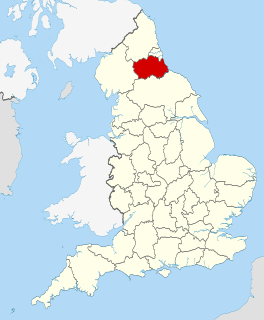
County Durham is a ceremonial county in North East England. The county town is the city of Durham. The ceremonial county spawned from the historic County Palatine of Durham in 1853. The largest settlement is Darlington, followed by Hartlepool and Stockton-on-Tees. The county borders are shared with multiple counties: Northumberland as well as Tyne and Wear to the north, North Yorkshire to the south and Cumbria to the west.

Shotley Bridge is a village, adjoining the town of Consett in County Durham, England. It is on the A694 road and beside the River Derwent which is crossed by the bridge giving the name. It was once the heart of Britain's swordmaking industry.
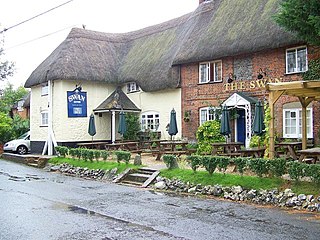
Enford is a village and civil parish in Wiltshire, England, in the northeast of Salisbury Plain. The village lies 10 miles (16 km) southeast of Devizes and 14 miles (23 km) north of Salisbury. The parish includes nine small settlements along both banks of the headwaters of the River Avon. Besides Enford, these are Compton, Coombe, East Chisenbury, Fifield, Littlecott, Longstreet, New Town and West Chisenbury.
Satley is a village and civil parish in County Durham, England, with a population of 292 in 2001, falling to 282 at the 2011 Census. It is situated six miles to the south of Consett on the B6296 road near the A68. The village of Satley lies in a narrow valley between Lanchester and Tow Law. It was long ago part of the large parish of Lanchester, but has become a parish in its own right in 1834. The Satley Parish Council meets often and is part of the County Durham Association of Local Councils, they attempt to solve issues in the village by meeting with Durham County Council or solving them internally.

Waskerley is a village in County Durham, England. It is situated six miles to the southwest of Consett and three miles southwest of Castleside and the A68. Stanhope in the Durham Dales is a further six miles to the southwest and the Derwent Reservoir and the village of Edmundbyers is approximately five miles to the north. The village of Muggleswick is three miles to the north.
Burnopfield is a village in County Durham, in England. It is situated north of Stanley and Annfield Plain, close to the River Derwent and is 564 feet above sea level. There are around 4,553 inhabitants in Burnopfield. It is located 7 miles from Newcastle upon Tyne and 15 miles from Durham.
Castle Eden is a village in County Durham, in England. The population of the parish at the 2011 census was 642. It is situated a short distance to the south of Peterlee, Wingate, Hutton Henry, the A19 and Castle Eden Dene. The village is famous for the former Castle Eden Brewery which was home of the famous Castle Eden Ale; most of it was demolished in 2003 for a new housing estate and only the main front building remains today. This is a listed building and is now managed office space with a popular Italian restaurant. The A19 used to run through the village until it was bypassed in the 1970s. The deep and impressive nearby dene extends all the way to sea, and its many yew trees are a particular feature where they find the dolomite soil advantageous.
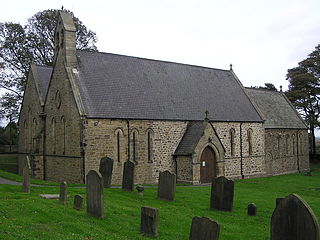
Cockfield is a village on the edge of Teesdale, County Durham, England. It is situated 8 miles to the south-west of Bishop Auckland, 15 miles (24 km) north-west of Darlington and 40 miles (64 km) south-west of Newcastle upon Tyne. Remains found on Cockfield Fell suggest there was a settlement in the area during the Iron Age. The parish church, dedicated to St Mary the Virgin, probably dates from the late 12th century.
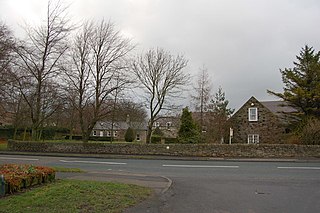
Medomsley is a village in County Durham, England, about 2 miles (3 km) northeast of the centre of Consett, 1+1⁄2 miles (2 km) south of Hamsterley and 1 mile (2 km) southeast of Ebchester.

Shincliffe is a village and civil parish in County Durham, England. The parish population was 1,796. It is situated just over 1 mile (1.6 km) to the south-east of Durham city centre, on the A177 road to Stockton. Shincliffe is also a civil and ecclesiastical parish consisting of Shincliffe Village, High Shincliffe, Sherburn House and Whitwell House.
Muggleswick is a village and civil parish in County Durham, England. It is situated a few miles to the west of Consett. the population was 130 at the 2001 Census reducing to 113 at the 2011 Census.

Hunstanworth is a small village in County Durham, England. It is situated approximately 10 miles to the west of Consett, south-west of the village of Blanchland. The population of the village as taken at the 2011 Census was 116.

Stanhope is a village and civil parish in the County Durham district, in the ceremonial county of Durham, England. It lies on the River Wear between Eastgate and Frosterley, in the north-east of Weardale. The main A689 road over the Pennines is crossed by the B6278 between Barnard Castle and Shotley Bridge. In 2001 Stanhope had a population of 1,633, in 2019 an estimate of 1,627, and a figure of 1,602 in the 2011 census for the ONS built-up-area which includes Crawleyside. In 2011 the parish population was 4,581.
Lanchester is a village and civil parish in County Durham, England, 8 miles (13 km) west of Durham and 5 miles (8 km) from the former steel town of Consett. It had a population at the 2011 Census of 4,054.
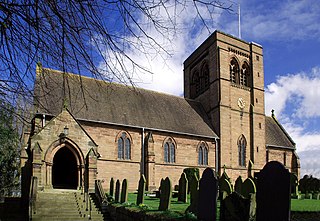
Norley is a village and civil parish in Cheshire, England, north of Delamere Forest, near the village of Cuddington. The population at the 2011 census was 1,169. Its name is derived from “Norlegh”, which means “north clearing”.

Aysgarth is a village and civil parish in Wensleydale, in the Richmondshire district of North Yorkshire, England. The village is in the Yorkshire Dales National Park, about 16 miles (26 km) south-west of Richmond and 22.6 miles (36.4 km) west of the county town of Northallerton.

Crayke is a village and civil parish in the Hambleton District of North Yorkshire, England, about 2 miles (3.2 km) east of Easingwold.

Wootton Rivers is a small village and civil parish in the Vale of Pewsey, Wiltshire, England. The village lies about 3 miles (5 km) northeast of Pewsey and 4 miles (6 km) south of Marlborough. During the 20th century its population halved and most of its facilities closed.

Peasenhall is a village and civil parish in the East Suffolk district, in the English county of Suffolk. The population of the civil parish at the 2011 Census was 517. It lies on the A1120 tourist route; neighbouring villages include Sibton and Badingham. It was the location of the Peasenhall Murder.














